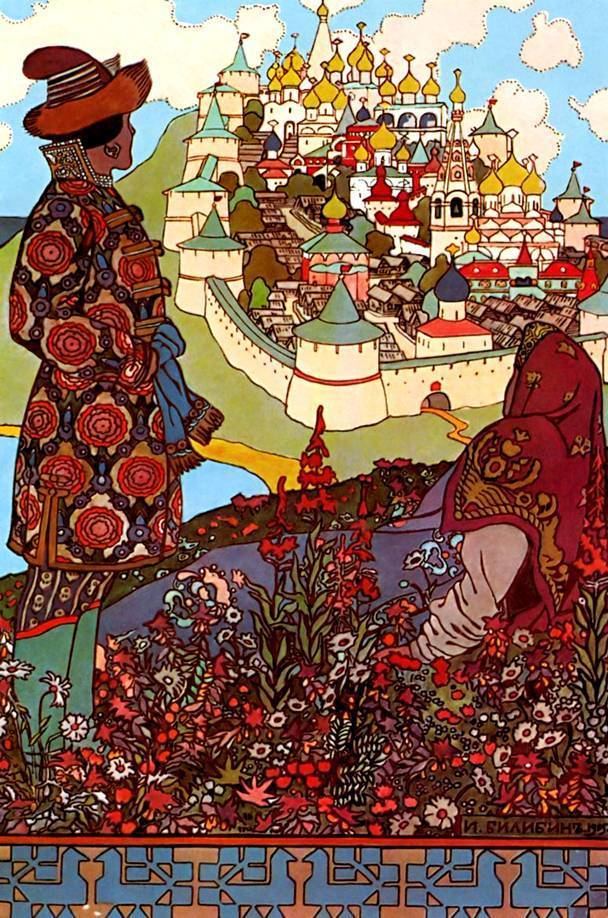Name Ivan Bilibin Period Art Nouveau | Role Illustrator | |
 | ||
Died February 7, 1942, Saint Petersburg, Russia Artwork Illustration for the epic "Dobrynya Nikitich and Zmey Gorynych" | ||
Ivan Bilibin ( Ivan Jakovlevic Bilibin ; 16 [O.S. 1876 ] 8 in the village of Tarchowka near Saint Petersburg - February 7, 1942 in Leningrad) was a Russian, later Soviet, artist, book illustrator and theater practitioner. He was a member of the associations Mir Iskusstva (The Art World), co-founder of the 'Soyuz russkih hudoznikov' '(Association of Russian Painters) and since 1937 a member of the Soyuz hudoznikov SSSR (Painters Association of the USSR).
Contents
Life
Born the son of military doctor Jakov Ivanovic Bilibin (Yakov Ivanovich Bilibin) and his wife Varvara Alexandrovna, he attended after school education and the law school of the St. Petersburg University. After graduating in May 1900 he went to Munich, where he completed his training with the painter Anton Azbe. He later continued at the Art Academy in Saint Petersburg ( Ilya Repin Ilya Repin ). After the formation of the artists' association Mir Iskusstva , where he was an active member, his entry into the newspaper and book graphics scene began with a commission for the design of magazine Mir Iskusstva in 1899. Artistic design of other magazines such as Dog Rose (SHipovnik) and expenditure of the Moscow publishing house followed.
In the period 1902 to 1904 he went to the ethnographic section of the museum of Alexander III to collect Ethnographic material and to photograph monuments of old village architecture in the Vologda, Archangelsk region, Tver; Skaja; olonezkaja and Petrozavodsk.
Bilibin's artistic talent was particularly evident in his Illustrations to the Russian fairy tales as well as in his work at theater performances.
At the time of the revolution of 1905 he drew revolutionary cartoons, especially for the magazine "Zupel" (ZHupel'), which in 1906 became prohibited. After the October Revolution in 1917, he left Russia. After living in Cairo and Alexandria, he finally settled down in 1925 in Paris. Here he designed private offices and Orthodox churches. Over time, Bilibin resigned with the Soviet power. In the period 1935 until 1936, he took part in shaping the Russian Embassy in Paris. He then traveled back home and settled in Leningrad.
From 1936 to 1941 Bilibin taught at the All-Russian Academy of Arts and continued his work as an illustrator and stage designer. Bilibin died in February 1942 during the Siege of Leningrad.
Privacy
In 1902 he Bilibin married his former student, the painter Marija Jakovlevna Tschembers (Mariya Yakovlevna CHembers). They had two sons; Alexander (1903) and Ivan (1908). In 1912 he again married a former student, the art school graduate Renee Rudolfowna O'Konnel (Rene Rudol'fovna O'Konnel'). In 1923 he married the painter Alexandra Vasilyevna Schtschekatichina-Potozkaja (aleksandra Vasil'evna SCHekatihina-Pototskaya), with whom he had a joint exhibition in Amsterdam in 1929.
